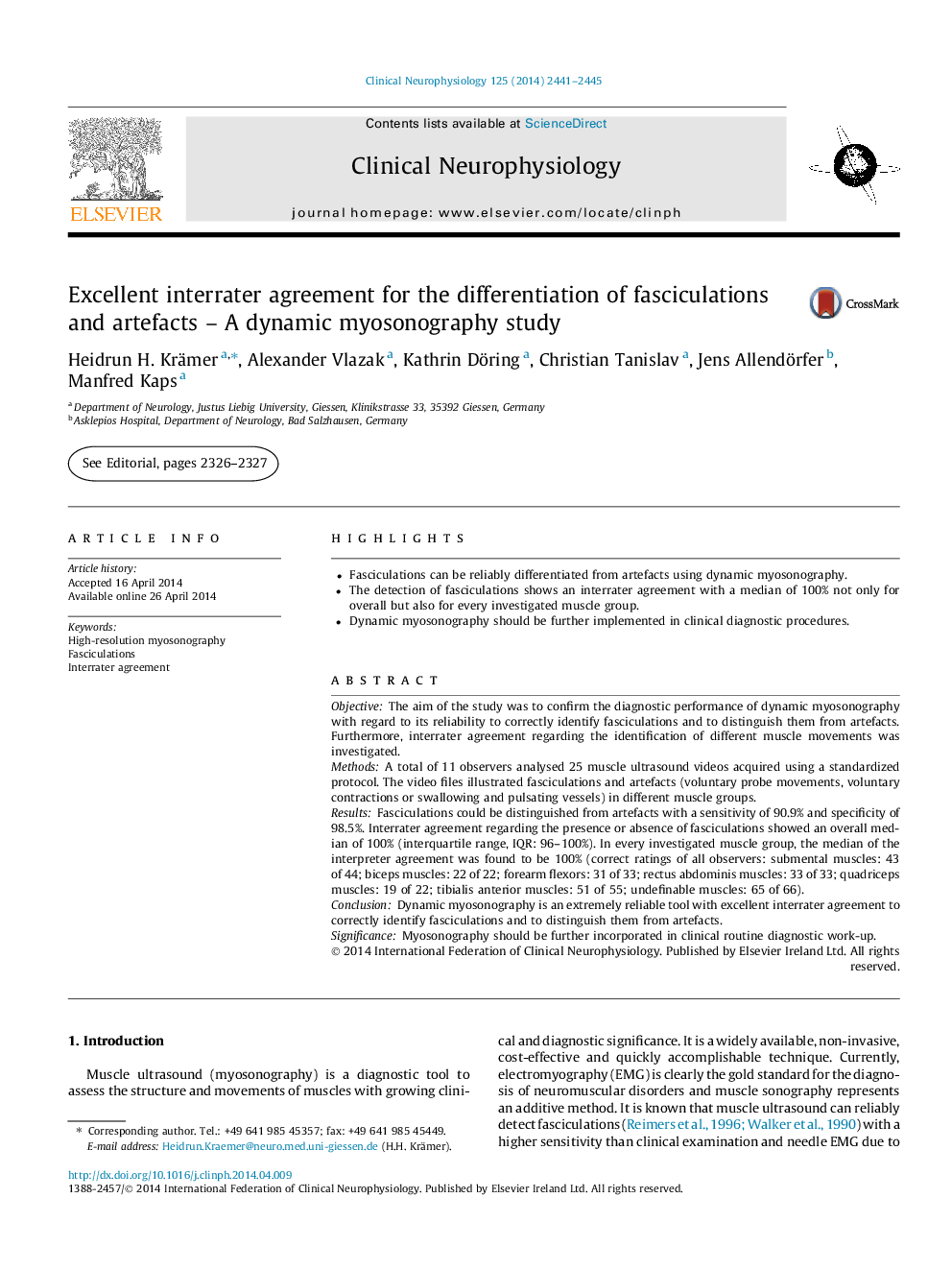| Article ID | Journal | Published Year | Pages | File Type |
|---|---|---|---|---|
| 3043462 | Clinical Neurophysiology | 2014 | 5 Pages |
•Fasciculations can be reliably differentiated from artefacts using dynamic myosonography.•The detection of fasciculations shows an interrater agreement with a median of 100% not only for overall but also for every investigated muscle group.•Dynamic myosonography should be further implemented in clinical diagnostic procedures.
ObjectiveThe aim of the study was to confirm the diagnostic performance of dynamic myosonography with regard to its reliability to correctly identify fasciculations and to distinguish them from artefacts. Furthermore, interrater agreement regarding the identification of different muscle movements was investigated.MethodsA total of 11 observers analysed 25 muscle ultrasound videos acquired using a standardized protocol. The video files illustrated fasciculations and artefacts (voluntary probe movements, voluntary contractions or swallowing and pulsating vessels) in different muscle groups.ResultsFasciculations could be distinguished from artefacts with a sensitivity of 90.9% and specificity of 98.5%. Interrater agreement regarding the presence or absence of fasciculations showed an overall median of 100% (interquartile range, IQR: 96–100%). In every investigated muscle group, the median of the interpreter agreement was found to be 100% (correct ratings of all observers: submental muscles: 43 of 44; biceps muscles: 22 of 22; forearm flexors: 31 of 33; rectus abdominis muscles: 33 of 33; quadriceps muscles: 19 of 22; tibialis anterior muscles: 51 of 55; undefinable muscles: 65 of 66).ConclusionDynamic myosonography is an extremely reliable tool with excellent interrater agreement to correctly identify fasciculations and to distinguish them from artefacts.SignificanceMyosonography should be further incorporated in clinical routine diagnostic work-up.
